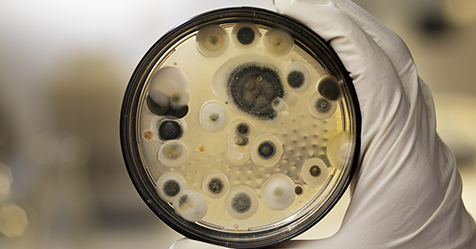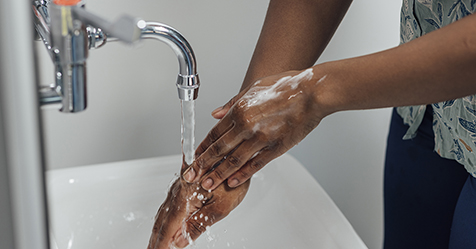Hurricanes, tornadoes, floods, fires, winter storms, mudslides, and earthquakes happen throughout the year all over the United States.
In 2014 alone, FEMA recorded 43 major disasters in states in the north, south, east, west, and the middle of the country. New Yorkers saw a severe winter storm and flooding; Kentucky residents suffered a mudslide; Californians had an earthquake; and Alaskans experienced flooding. Additionally, Nebraskans were faced with heavy winds, and citizens of South Dakota dealt with tornadoes.
When natural disasters occur, the government relies on private companies to come in and clean up the damage. Though they’ll first turn to disaster restoration firms, cleaning and maintenance contractors can be there to lend a hand during the initial cleanup. Afterwards, if local and state governments need help with activities that are not related to restoration, they can tap into their resources and hire the best cleaning companies for the job.
Aiding Disaster Restoration Contractors
When a powerful hurricane descends upon a town, leaving buildings flooded, windows shattered, furniture and carpets ruined, and government properties in shambles, disaster restoration companies will go into these buildings and rid them of the standing water, remove the debris, and dry salvageable carpeting.
During this time, employees at cleaning companies already under contract with the buildings suddenly find themselves out of work for days or weeks at a time. They can’t go in and clean around the mess, so they may think they have to wait it out.
Jimmy Weatherly, managing director-large loss at ServiceMaster Clean, said he’s willing to go in together with these companies to clean up the property faster. “If they’re under contract and have labor resources, they can be put on the project to help us expedite our work,” he said. “We are happy to work with our clients.”
If local cleaning companies have displaced employees, Weatherly said his company will train them, provide supervision, and work with them to execute the necessary duties. “For our labor needs, we work to the local market to provide it,” he said. “It allows us to be more economic.”
The training, Weatherly said, may include teaching workers about contents clearing, deodorization, water damage restoration, soot and smoke removal, structural cleaning, structural drying, and the removal of non-viable building materials. Workers can also learn about possible hazards and how to use their safety equipment like head, eye, and ear protection, respirator masks, steel toe boots, gloves, decontamination chambers, and Tyvek suits.
“Every job is unique and the conditions and the nature of each project are going to dictate what level of safety you’re going to be using,” Weatherly said. For example, if workers are in an environment where microbial growth has occurred, or in one that was recently on fire, they would need respirator masks, he said.
The Benefits of Working Together
Cleaning company owners must understand that they need to put their clients first after a disaster strikes, even if it means stepping back from the regular tasks and taking on new ones.
The training and equipment that disaster restoration firms have at their disposal allows them to go in and bring buildings back to their status before the time of the fire, hurricane, tornado, or flood. They may have equipment for specialty tasks such as high-level water extraction, air duct cleaning, moisture monitoring, and corrosion control. They are used to emergency situations, Weatherly said, while cleaning companies are not. “Sometimes properties have sustained multiple loss types, so disaster restoration companies are accustomed to taking on multiple tasks and maneuvering through a schedule that changes day to day until project completion,” he said. “Cleaning companies are typically challenged with providing services that address the day-to-day needs of their clients, who have not sustained a property loss disaster. Their schedules can often be set and structured in manner that can be repeated.”
What Disaster Cleanup Looks Like for Custodians
A disaster recovery company brings a building back to its original appearance, more or less. Now, it’s time for cleaners to go back in and start working again.
David Pinto, who does restoration and the cleaning that follows, and owner of Great Restoration Services, Inc., said he utilizes standard carpet cleaning machines at the end point in the government project. “Theway we would do it is treat the carpet with antimicrobial supplies. We’d then rinse the carpet with a neutral-based solvent to make sure we didn’t leave anything in the carpet. We want to make sure the carpet is dried and brought back to pre-event standards.”
Weatherly and his team also use antimicrobial materials to stop the growth of any bacteria. If the disaster occurs in a building with a flat concrete surface, he will bring in floor scrubbers, and for carpets, he uses extractors. In addition, “Ajanitorial business would deodorize the carpet and building,” he said. “They play an important part in the final piece.”
For more information on the best cleanup supplies and tools, Pete Scaffidi, CEO of UNIFIED Disaster Resources, recommended researching the topic on the U.S. Centers for Disease Control and Prevention (CDC) website at www.cdc.gov. Each type of natural disaster has its own dedicated section and covers everything from worker safety after a flood to the type of equipment for protecting the body from harm during cleanup.
Preparing for a Natural Disaster
When cleaning companies sign on to help clients, they should ask said clients whether or not they have plans in place should a natural disaster happen. Cleaning products, especially ones containing chemicals, should be stored away from areas like basements and garages that are susceptible to flooding; otherwise a bigger mess might be made if they accidentally mix with water.
Cleaning companies should have ample safety supplies at their disposal, like gloves and masks, so that when their janitors get back to work, they are protected from contaminants. Stocking up on antimicrobial cleaners as well will be useful if any contaminants enter the building during the natural disaster.
Disasters can strike anytime, anywhere. With the proper companies in place to take care of government properties, they can be back up and running in no time. Above all, cleaning companies should make their affected customers their No. 1 priority.
“You need to understand the needs of a customer when a loss occurs,” Weatherly said. “And then you can figure out the best way to serve the customer.”
Government Restoration Jobs: Even a Possibility?
To be considered for the work following disaster restoration, or any government contracts for that matter, Duke Edwards, commercial sale specialist/priority response at SERVPRO, said that companies first have to procure a GSA license. “The process to obtain a GSA License is very in-depth and requires some expense on the part of the company trying to obtain the GSA License. It also requires a full ‘Dunn and Bradstreet’ credit check, whereby several years of company financial statements must be submitted. There are several companies throughout the [United States] that will help navigate the process for a fee.”
According to GSA.gov, before starting the GSA application, business owners need to make sure they meet certain requirements. For example, they have to prove that they have a secure customer base, that they’ve been active for a while, and that they can meet the needs of the government. That can be done through FedBizOpps.gov.
David Pinto, owner of Great American Restoration Services, Inc.,said a business owner should also make sure that he or she has property insurance, and is licensed, paying proper prevailing wages, is an Equal Opportunity Employer, and has a system for paperwork that includes monitoring the hours employees work on a government project.
If an owner of a cleaning company is sure that his or her business will meet the government’s standards and can assist them, he or she can then log onto the System for Award Management website at SAM.gov and start the registration process.
In the event that a project is awarded, Pinto said that it’s extremely important for companies to set up perimeters and expectations before starting. “Especially when doing this work, you have to state that, ‘We are looking to bring the property back to this and this standard and point.’ You need to establish end-point criteria before starting a cleaning job that shows when the job will be completed and done.”



